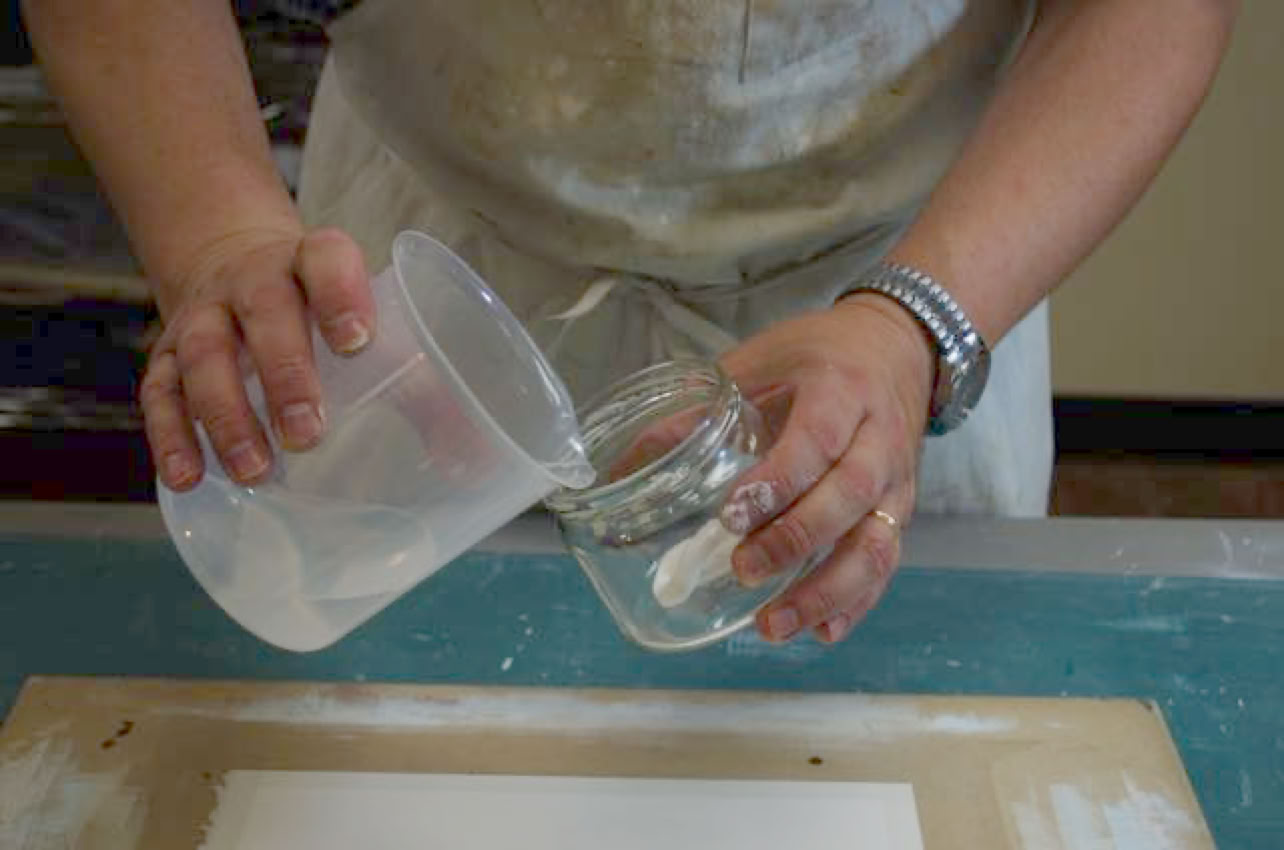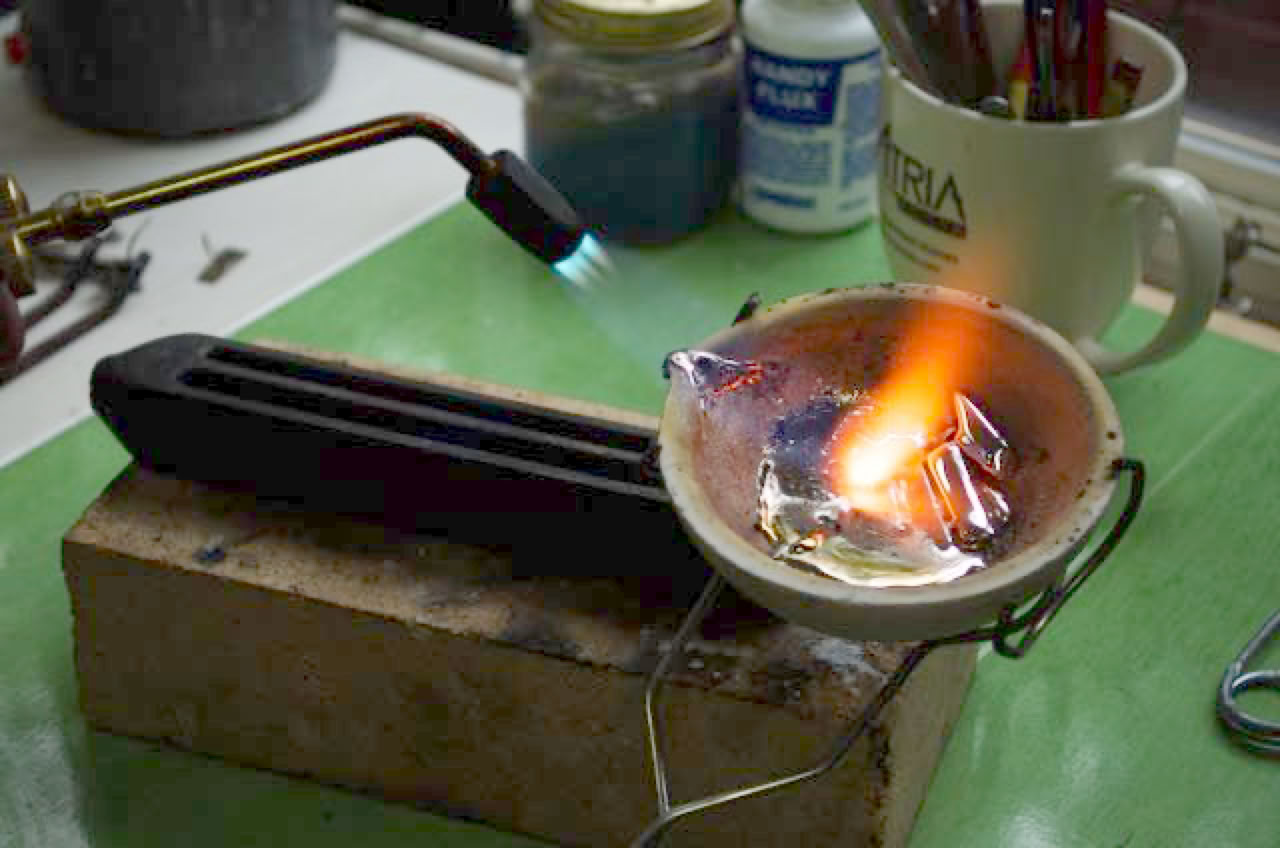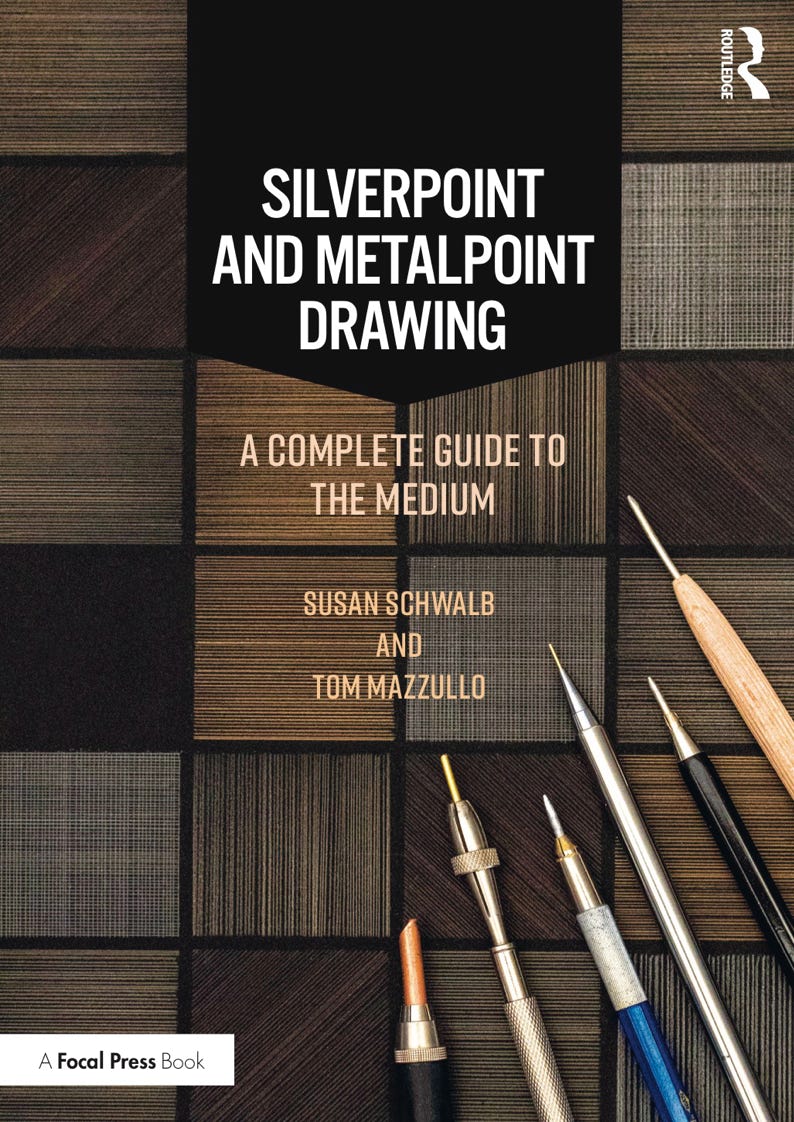TOM MAZZULLO
BOOK
Silverpoint and Metalpoint Drawing: A Complete Guide to the Medium by Susan Schwalb and Tom Mazzullo is the first thorough guide to working in metalpoint, fully illustrated in color with chapters on technique, history and a gallery of contemporary metalpoint masters. With six chapters on materials, techniques, and care of metalpoint work, it includes a chapter on mixed media by artist and professor Carol Prusa, and author, scholar, and conservator Dr. Thea Burns has written a chapter on the history of metalpoint drawing. Bruce Weber, Senior Curator at National Academy Museum and School of Fine Arts, writes the foreword. Published by Routledge under the Focal Press imprint, it can be ordered directly from the publisher or from Amazon.
About My Co-Author:
Susan Schwalb is one of the foremost figures in the current silverpoint revival. She was born in New York City in 1944 and studied at Carnegie-Mellon University. She has had over 50 solo exhibitions in galleries and museums world-wide, and her work is represented in most major public collections, including The Museum of Modern Art, The Metropolitan Museum of Art, the Kupferstichkabinett, Berlin, the Ashmolean Museum, Oxford, the Yale University Art Gallery, and the British Museum, London. Schwalb was one of only three living artists included in the historical metalpoint exhibition Drawing with Silver and Gold: From Leonardo to Jasper Johns at the National Gallery of Art, Washington. She lives in New York City.
About the Book:
Silverpoint and Metalpoint Drawing: A Complete Guide to the Medium had its conception 40 years ago when Susan began collecting technical information about the practice of metalpoint drawing from living metalpoint artists with whom she came in contact. Metalpoint drawing was rarely practiced then, and very few exhibitions had ever been held; only one exhibition of American metalpoint drawing, mounted by Bruce Weber, had ever been organized. At that time, no comprehensive book of metalpoint technique had yet been published, only paragraphs on the subject in art manuals by Cennino Cennini (600 years ago) and James Watrous (75 years ago). Metalpoint technique had passed from teacher to student by word of mouth, and in 2016, interest in the medium was at an all-time high after the first historical exhibition of metalpoint was organized jointly by the National Gallery and The British Museum.
Susan approached me with her notes and an outline of what a full manual might look like. My experience in giving metalpoint drawing workshops offered a guide to organizing the technical material needed for a complete manual on the medium. After rapidly receiving a contract with the academic publisher Routledge in the U.K., We worked together for over a year to flesh out the book with technical demos, recipes and product tests, taking photographs and recording successes and failures with metalpoint practices we had sourced both from our own experience and from hints and suggestions from artists with whom we were in contact worldwide. These practices became five chapters on tools, techniques, grounds, media and conservation. Chapter five, on mixed media, was written by the prominent experimental metalpoint artist Carol Prusa, with whom we were both eager to work. Susan has long had a relationship with Dr. Thea Burns, who very kindly wrote a brief but thorough chapter on the history of metalpoint drawing from the Fourteenth to the Twentieth Centuries, with enough notes to provide anyone a lifetime of research into the practice of the art. Early on Susan began putting together a list of living artists working in the medium in the U.S. and in Europe, contacting them for information, biographies, and images, all of which eventually would be condensed into the massive chapter on contemporary metalpoint artists, which includes colleagues, mentors, famous and emerging artists, and historical figures such as Joseph Stella and Paul Cadmus.
The book has been a success, selling well and garnering praise and positive reviews from artists, scholars, curators, and students. Susan and I are happy to answer questions, and we invite readers to contact us for any interest they may have about the book, the medium of metalpoint drawing, about our work, the work of included artists, or about ideas for exhibitions or live demos. We wrote this book to increase interest in metalpoint drawing and to continue this 600-year tradition well into the Twenty-first Century.

Unpublished images from research for the book:
thinning Shiva® casein to make a metalpoint ground preparation (top).
Metalsmith Jamie McLandsborough melts bismuth into a rod to make a metalpoint stylus (bottom).

Reviews (from the Routledge website):
"The writings of Italian Renaissance artists such as Cennino Cennini, Michelangelo and Giorgio Vasari are an incredibly valuable and insightful resource for scholars in the field because of their hands-on practical experience of the making of art which no amount of library study can replicate. The same holds true today and I have learned a huge amount from looking at drawing, both old and new, with artists as they frequently have a profound granular knowledge of artistic process and thinking. There is no better example of the timelessness of drawing than metalpoint as, in contrast to all the other graphic techniques, it has changed the least from the 14th century to today which means anyone tempted to pick up a stylus faces the same challenges in using it successfully as those confronted by a workshop assistant in Renaissance Florence. But now they do have an advantage over their 15th-century counterpart thanks to this guide written by two vastly experienced metalpoint practitioners, Tom Mazzullo and Susan Schwalb. I could not think of better or more encouraging mentors to encourage artists, as well as scholars, to explore and experiment with metalpoint drawing."
- Hugo Chapman, The British Museum
"What a great book about Silverpoint and Metalpoint drawing! Every once in a while a book about art rises to the top of the list. This one, Silverpoint and Metalpoint Drawing: A Complete Guide to the Medium, does exactly that. Are you an art lover, art historian, art teacher, artist or just curious? Here, at last, is a long sought after definitive reference on Silverpoint and Metalpoint. The book is not only about the little known history of the art and Old Masters’ techniques but also those of contemporary artists’ concepts. It is replete with helpful information, "how to" photos, and an array of elegant images demonstrating the beauty, range and possibilities of the medium. Also included is a comprehensive bibliography and list of sources for supplies enabling readers to explore the medium themselves. This is the ultimate book about Metalpoint. I cannot recommend it highly enough."
- Sherry Camhy, New York University
"Silverpoint and Metalpoint Drawing: A Complete Guide to the Medium is, indeed, the most complete and useful work ever written on drawing in metalpoint. Three distinguished practitioners clarify all artists need to know to get started or advance their work in metalpoint. The book also addresses how to handle, display, and store metalpoints. And it is a vital resource not only for artists but for teachers, conservators, collectors, scholars, and appreciators – anyone who wants to understand and enjoy metalpoint drawings."
- Ann Prentice Wagner, Arkansas Arts Center
"Any artist who is considering trying their hand at this fascinating technique, whether in a traditional or experimental mode, will benefit tremendously from the wealth of technical details the authors include. With such an extensive selection of examples, and strong historical overview, It's hard to imagine a more comprehensive treatment of metalpoint."
- Clayton Merrell, Carnegie Mellon University
"Great Renaissance masters like Raphael and Albrecht Dürer drew with metalpoint on prepared papers, the technique underwent something of a revival in the 19th century, and now contemporary artists are turning to this glistening medium once again. In Silverpoint and Metalpoint Drawing you are in the practiced hands of two contemporary masters of the medium Susan Schwalb and Tom Mazzullo who, with a unique understanding of the technique teach it step by step, from creating fine lines with a stylus to subtle tones with metal wool pads and wire brushes. They take you through the entire process from preparing the paper to photographing and framing the finished piece. This book, full of the insight that comes with experience, will be a valuable tool for both artists and historians of the medium."
- Nadine M. Orenstein, The Metropolitan Museum of Art
© 2025 Tom Mazzullo
